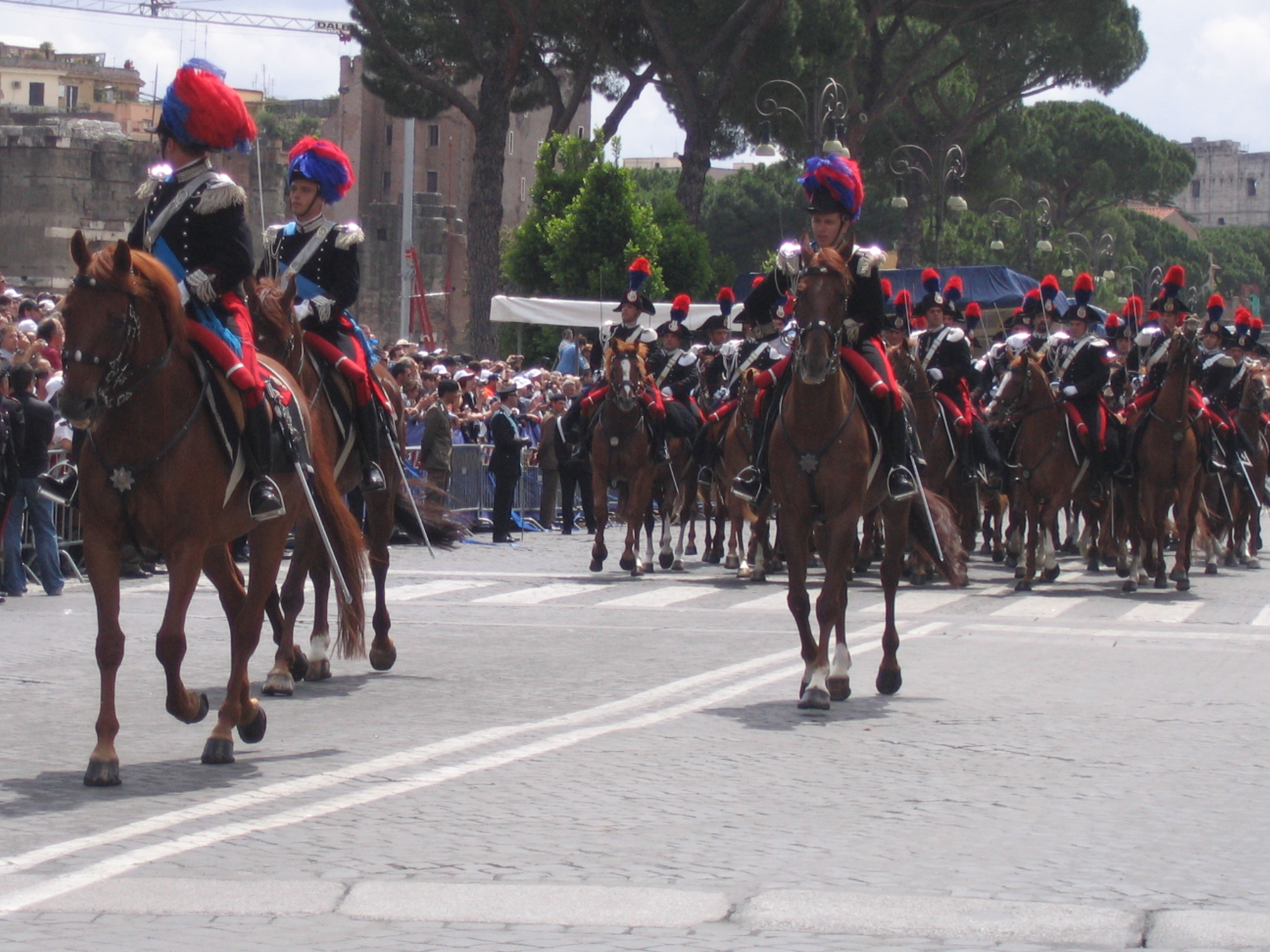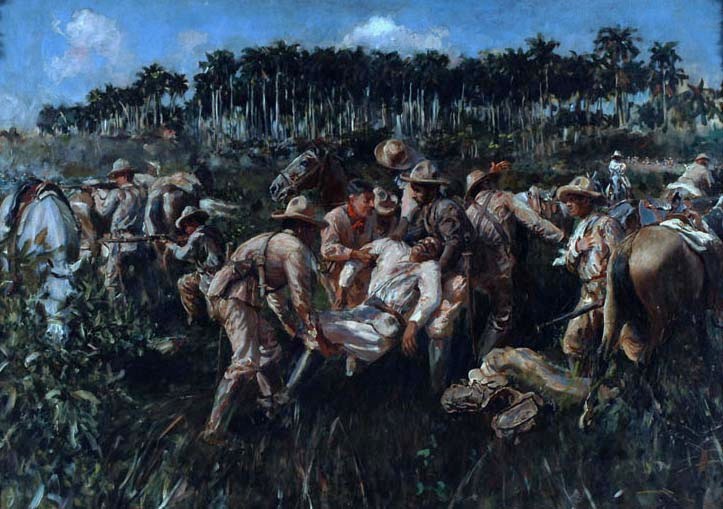|
Day Of The Cuban Armed Forces
The Day of the Cuban Armed Forces is a national holiday in Cuba celebrated annually on December 2 commemorating the landing of the Granma (yacht), Granma which brought the Castro brothers and their supporters from Mexico to Cuba to start their revolution against the Batista Regime. The event is marked by military parades, fireworks and concerts throughout the country. History and celebrations In October 1956, a group of Cuban dissidents, led by Fidel Castro, purchased a yacht called the Granma (yacht), Granma for US$15,000 from a United States-based Company, Inc. The yacht, which carried 82 rebels sailed from the Mexican port of Tuxpan, Veracruz on November 25, 1956 and headed for Cuba. The revolutionaries planned to land in the province of Oriente and begin an armed struggle against the government of Batista. On the night of December 2, the Granma landed on the coast of Cuba. The landing of a group of Cubans led by Fidel Castro from the yacht Granma is considered to be the day of ... [...More Info...] [...Related Items...] OR: [Wikipedia] [Google] [Baidu] |
Military Parade
A military parade is a formation of soldiers whose movement is restricted by close-order manoeuvering known as drilling or marching. The military parade is now almost entirely ceremonial, though soldiers from time immemorial up until the late 19th century fought in formation. Massed parades may also hold a role for propaganda purposes, being used to exhibit the apparent military strength of a country. History The terminology comes from the tradition of close order formation combat, in which soldiers were held in very strict formations as to maximise their combat effectiveness. Formation combat was used as an alternative to mêlée combat, and required strict discipline in the ranks and competent officers. As long as their formations could be maintained, regular troops could maintain a significant advantage over less organised opponents. Nevertheless, military parades are not to be confused with the military show of force. Although the firepower of breechloading rifles and ... [...More Info...] [...Related Items...] OR: [Wikipedia] [Google] [Baidu] |
La Bayamesa
"" (, ) is the national anthem of Cuba. It was first performed in 1868, during the . Perucho Figueredo, who took part in the battle, wrote and composed the song. The melody, also called "" (), was composed by Figueredo in 1867. Overview On October 20, 1868, the Cuban forces obtained the capitulation of the Spanish colonial authorities in Bayamo, the jubilant people surrounded Figueredo and asked him to write an anthem with the melody they were humming. Right on the saddle of his horse, Figueredo wrote the lyrics of the anthem, which was longer than the current official version. Figueredo was captured and executed by the Spanish two years later. Just before the firing squad received the Fire command, Figueredo shouted the line from his song: "Morir por la Patria es vivir" (). Officially adopted by Cuba as its national anthem in 1902, upon the foundation of the Republic, it was retained even after the revolution of 1959. The Cuban composer Antonio Rodriguez-Ferrer contributed t ... [...More Info...] [...Related Items...] OR: [Wikipedia] [Google] [Baidu] |
Antonio Maceo Military College
Antonio is a masculine given name of Etruscan origin deriving from the root name Antonius. It is a common name among Romance language-speaking populations as well as the Balkans and Lusophone Africa. It has been among the top 400 most popular male baby names in the United States since the late 19th century and has been among the top 200 since the mid 20th century. In the English language it is translated as Anthony, and has some female derivatives: Antonia, Antónia, Antonieta, Antonietta, and Antonella'. It also has some male derivatives, such as Anthonio, Antón, Antò, Antonis, Antoñito, Antonino, Antonello, Tonio, Tono, Toño, Toñín, Tonino, Nantonio, Ninni, Totò, Tó, Tonini, Tony, Toni, Toninho, Toñito, and Tõnis. The Portuguese equivalent is António (Portuguese orthography) or Antônio (Brazilian Portuguese). In old Portuguese the form Antão was also used, not just to differentiate between older and younger but also between more and less important. In Galician th ... [...More Info...] [...Related Items...] OR: [Wikipedia] [Google] [Baidu] |
Jose Maceo Military College
Jose is the English transliteration of the Hebrew and Aramaic name ''Yose'', which is etymologically linked to ''Yosef'' or Joseph. The name was popular during the Mishnaic and Talmudic periods. *Jose ben Abin * Jose ben Akabya *Jose the Galilean *Jose ben Halafta *Jose ben Jochanan *Jose ben Joezer of Zeredah *Jose ben Saul Given name Male * Jose (actor), Indian actor * Jose C. Abriol (1918–2003), Filipino priest * Jose Advincula (born 1952), Filipino Catholic Archbishop * Jose Agerre (1889–1962), Spanish writer * Jose Vasquez Aguilar (1900–1980), Filipino educator * Jose Rene Almendras (born 1960), Filipino businessman * Jose T. Almonte (born 1931), Filipino military personnel * Jose Roberto Antonio (born 1977), Filipino developer * Jose Aquino II (born 1956), Filipino politician * Jose Argumedo (born 1988), Mexican professional boxer * Jose Aristimuño, American political strategist * Jose Miguel Arroyo (born 1945), Philippine lawyer * Jose D. Aspiras (1924–1999), Fil ... [...More Info...] [...Related Items...] OR: [Wikipedia] [Google] [Baidu] |
Flag Of Cuba
The national flag of Cuba ( es, link=yes, Bandera de Cuba) consists of five alternating stripes (three blue and two white) and a red equilateral triangle at the hoist, within which is a white five-pointed star. It was designed in 1849 and officially adopted May 20, 1902. The flag is referred to as the ''Estrella Solitaria'', or the ''Lone Star'' flag. It is in the stars and stripes flag family. History and symbolism Fighting against the Spanish Crown with the rebel armies of Venezuela, Narciso López moved from his native Caracas to Havana, Cuba. His involvement in anti-colonial movements forced him into exile. In 1849 he moved to New York City, where he continued to advocate for an independent Cuba. The three blue stripes represent the three departments in which Cuba was divided at that time, the white – purity of the patriot cause, and the red triangle – a symbol of strength, constancy, and Mason influences (triangles are Masonic symbols for equality and were found in a ... [...More Info...] [...Related Items...] OR: [Wikipedia] [Google] [Baidu] |
Jose Marti Pioneer Organization
Jose is the English transliteration of the Hebrew and Aramaic name ''Yose'', which is etymologically linked to ''Yosef'' or Joseph. The name was popular during the Mishnaic and Talmudic periods. *Jose ben Abin *Jose ben Akabya *Jose the Galilean *Jose ben Halafta *Jose ben Jochanan *Jose ben Joezer of Zeredah *Jose ben Saul Given name Male * Jose (actor), Indian actor * Jose C. Abriol (1918–2003), Filipino priest * Jose Advincula (born 1952), Filipino Catholic Archbishop * Jose Agerre (1889–1962), Spanish writer * Jose Vasquez Aguilar (1900–1980), Filipino educator * Jose Rene Almendras (born 1960), Filipino businessman * Jose T. Almonte (born 1931), Filipino military personnel * Jose Roberto Antonio (born 1977), Filipino developer * Jose Aquino II (born 1956), Filipino politician * Jose Argumedo (born 1988), Mexican professional boxer * Jose Aristimuño, American political strategist * Jose Miguel Arroyo (born 1945), Philippine lawyer * Jose D. Aspiras (1924–1999), Fili ... [...More Info...] [...Related Items...] OR: [Wikipedia] [Google] [Baidu] |
Cuban War Of Independence
The Cuban War of Independence (), fought from 1895 to 1898, was the last of three liberation wars that Cuba fought against Spain, the other two being the Ten Years' War (1868–1878) and the Little War (1879–1880). The final three months of the conflict escalated to become the Spanish–American War, with United States forces being deployed in Cuba, Puerto Rico, and the Philippine Islands against Spain. Historians disagree as to the extent that United States officials were motivated to intervene for humanitarian reasons but agree that yellow journalism exaggerated atrocities attributed to Spanish forces against Cuban civilians. Background During the years 1879–1888 of the so-called "Rewarding Truce", lasting for 17 years from the end of the Ten Years' War in 1878, there were fundamental social changes in Cuban society. With the abolition of slavery in October 1886, freedmen joined the ranks of farmers and the urban working class. The economy could no longer sustain itse ... [...More Info...] [...Related Items...] OR: [Wikipedia] [Google] [Baidu] |
Yorckscher Marsch
Yorckscher Marsch (english ''Yorckian march'') was written by Ludwig van Beethoven in 1808 or 1809 as a march ''Für die böhmische Landwehr'' (For the Bohemian Militia). It was the first of three military marches written by Beethoven. History From the name of the Prussian General Yorck, Beethoven's march is also known as Marsch des Yorck'schen Korps (Armeemarschsammlung II, 103, Bundeswehr (Armeemarschsammlung II, 37, Königlich Preußisch) and Heeresmarsch II, 5), was composed in 1808 in F major as a ''"Marsch für die böhmische Landwehr"''. Since Prussia and the Prussian army played a paramount role in the German states, the march is often played and is one of the most important German military marches. It is the traditional march of the Wachbataillon, the German Bundeswehr's elite drill unit, and is also played as the first march at the Grand Tattoo (Großer Zapfenstreich) and it was a march of the East German armed forces. Outside of Germany, this march is also play ... [...More Info...] [...Related Items...] OR: [Wikipedia] [Google] [Baidu] |
Divisional General
Divisional general is a general officer rank who commands an army division. The rank originates from the French (Revolutionary) System, and is used by a number of countries. The rank is above a brigade general, and normally below an army corps general. The rank is mostly used in countries where it is used as a modern alternative to a previous older rank of major-general or lieutenant-general. Specific countries Brazil The Brazilian rank ''general-de-divisão'' translates literally as "general of division", and is used by the army. This rank is equivalent to lieutenant-general. The air force equivalent is ''major-brigadeiro''(literally "major-brigadier"). The navy equivalent is ''vice-almirante'' (literally, vice-admiral) Chile The Chilean rank ''general de división'' translates literally as "general of division", and is used by the army. This rank is equivalent to lieutenant-general. The air force equivalent is ''general de aviación'' (literally "aviation general"). These ... [...More Info...] [...Related Items...] OR: [Wikipedia] [Google] [Baidu] |
Army Corps General
An army corps general or corps general is a rank held by a General officer who commands an army corps. The rank originates from the French (Revolutionary) System, and is used by a number of countries. Normally, the rank is above the divisional general and below the army general, so it usually corresponds to the lieutenant general. Algeria The rank of was created in November 1994 as the highest rank in the Armée nationale populaire (ANP), the rank below it being Major General. Its rank badge shows three stars. The first officer to be promoted to the rank was general Mohamed Lamari, chief of staff of the ANP (1993-2004). In 2006 three officers were promoted to the rank - Ahmed Gaid Salah, chief of staff of the ANP, Bennabes Ghzeiel, military advisor to president Abdelaziz Bouteflika and former head of the gendarmerie, and Toufik Mediene, head of the Département du Renseignement et de la Sécurité. After Ghezeiel's death in July 2014, only Toufik and Gaid Salah were the only l ... [...More Info...] [...Related Items...] OR: [Wikipedia] [Google] [Baidu] |

.jpg)

